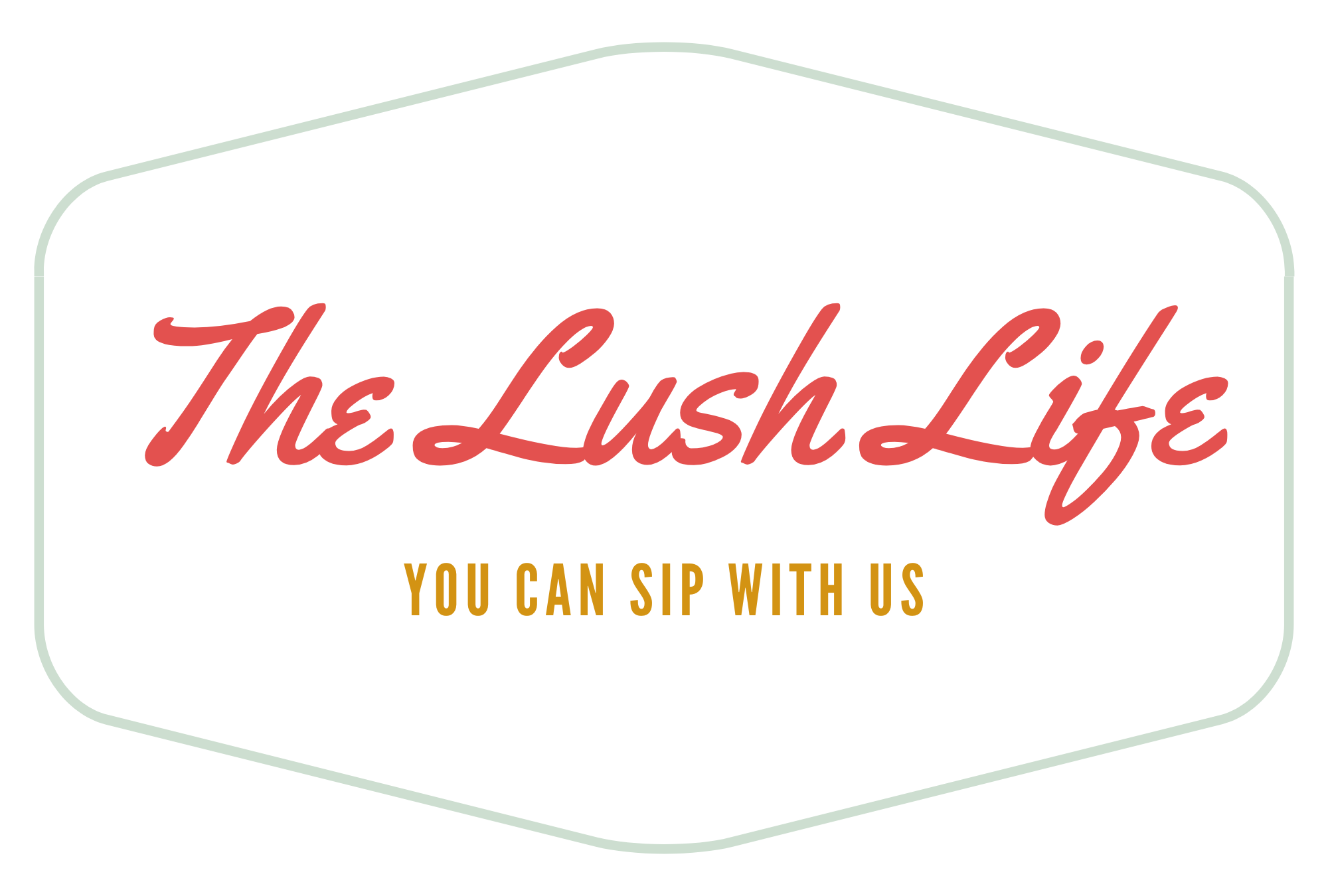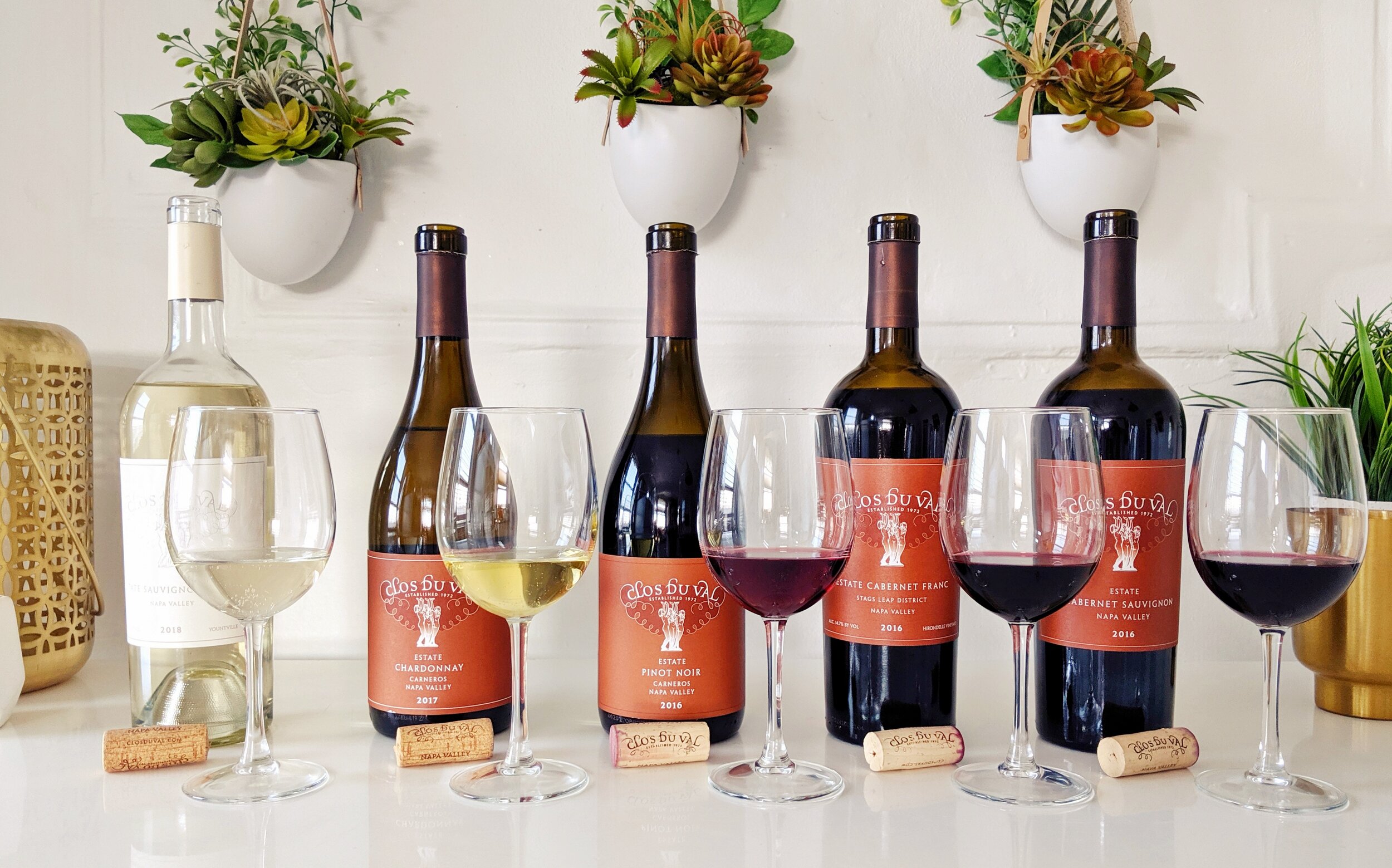Everything You Need To Host A Wine Tasting
You don't need to be a professional sommelier to gather your friends for a fun and educational wine tasting! Part of the fun of exploring the wine world is coming together to sip, share, and compare your tasting notes-- plus, it’s a great alternative to an expensive night out at the wine bar.
I put together an easy DIY wine tasting guide, with a little help from my friends at Clos Du Val Winery. Follow these 5 simple steps to recreate it in your own home!
1. Pick 4-5 Wines from a Classic Region
For a memorable wine tasting event, you need to start with quality wines! I highly recommend, especially if you’re just starting out and beginning to build up your palate, that you start with classic grape varieties from a classic region. This will help you create a solid foundation-- so when you’re ready to branch out to funkier or more obscure selections, your tasting skills will already be on point!
For a solid Wine 101 tasting, I recommend serving 5 wines: light white, full white, light red, medium red, and full bodied red. When I put this tasting together, I went with wines from one of the most classic wineries from perhaps the most classic American wine region: Clos Du Val in Napa Valley! Clos Du Val is one of the original wine pioneers in Napa, founded in 1972 just as the US was starting to earn accolades for producing fine wines. Still family owned today, they are producing lovely and approachable wines that are a true benchmark style in terms of what we can expect from Napa Valley.
Somm Tip: Choosing all your wines from a single winery will guarantee a harmonious tasting, because the head winemakers’ style will carry through each selection!
Because you only need 2 oz of a wine to taste it, each bottle will cover 10 guests.
Get The Wines:
Click to have them delivered to your door!
2018 Sauvignon Blanc, State Lane Vineyard, Yountville, Napa Valley
Winery Notes: This Sauvignon Blanc is a seasonal favorite and is perfect for spring. It's bright and fresh with hints of lime zest, pineapple, lemon and a tart, clean finish. A classic Sauvignon Blanc from our estate vineyards in Yountville.
2017 Estate Chardonnay, Carneros, Napa Valley
Winery Notes: Made exclusively using grapes from our own acclaimed Carneros estate vineyard, which we have been farming for more than four decades, this Chardonnay is a Clos Du Val favorite. Showing off a beautiful pale straw color, this Estate Chardonnay leads with aromas of bread dough, cotton candy, linen and jasmine flower. This wine is lean, polished and quite elegant. On the finish, you'll find notes of wet stone and alluring mineralities.
2016 Estate Pinot Noir, Carneros, Napa Valley
Winery Notes: Brilliant light red in color, this Pinot Noir has great clarity. Chocolate, raspberry, and fresh strawberry leap from the glass. The complex nose leads to bold flavors of red fruits, the most notable being bright cherry with a round flavor palate. With a rich mouthfeel, the 2016 Pinot Noir displays a long velvety finish.
2016 Estate Cabernet Franc, Hirondelle Vineyard, Stags Leap District, Napa Valley
Winery Notes: The 2016 Cabernet Franc from our prized Hirondelle Vineyard in Stags Leap District is full of bright aromas of blueberry, rosemary, dark chocolate and pine, leading to notes of caramel and a hint of fresh mint. Dusty tannins lead to a smooth and spicy finish.
2015 Estate Cabernet Sauvignon, Napa Valley
Winery Notes: This Napa Valley Cabernet Sauvignon is brimming with classic characteristics of cassis, bramble fruit and blueberry. The hints of butterscotch on the long, smooth finish are a giveaway of the new, carefully selected French oak barrel influence.
2. Set Your Table: What You’ll Need
Keep it simple!
For each guest:
A wine glass
Just a normal universal glass is fine, you don’t need to get fancy here-- although stems are preferred for easier swirling and to prevent the heat from your hands heating up the wine! Riedel’s line for Target, Vivant, is what I personally use. Note: you do not need 5 glasses per person. It’s fine to use the same glass for each wine-- in fact, that’s how us pros do it. As long as each wine is progressively bigger, richer, and more concentrated you don’t even really need to do a water rinse between wines; although you certainly can.
A water glass
Hydration is key when sipping, and you can cleanse your palate with water between tastes!
A plain sheet of white paper
This comes in handy for holding the wine against in order to appreciate its color.
For the table:
A dump bucket
Having this on the table will come in handy in case anyone declines to finish their taste before moving on to the next wine (not a problem with my friends, but still a good practice!).
Bread or crackers
Resist the urge to put out your cheese board or other snacks out until the ‘official’ tasting portion is over. You want to keep your palate clean and unencumbered by food-- that includes butter or olive oil for bread. After you taste through everything and discuss each wine, let the charcuterie fly!
3. Prep & Print Tasting Packets
Tasting sheets are a wonderful way for your guests to take notes on the wines, and have a memento to take home. For your convenience, I have a tasting packet template you can download and print here!
4. Brush Up On the Basics of Tasting
To taste like the professionals, try the ‘4 S’ tasting method: See, Swirl, Sniff, Sip!
Watch me demonstrate in this mini-wine-class video:
1) See: Look for color, clarity, and brilliance. Is the wine sparkling? Can we tell anything about the age of the wine by the color?
2) Swirl: Aerate the wine to release its aromas. Check out the ‘legs’ for clues to the body, sweetness and alcohol level of the wine.
3) Sniff: 90% of what we perceive as ‘taste’ is actually smell! Aromas can be fruit (for whites, citrus, orchard, stone, and tropical fruit are your benchmarks; for reds, blackberry, red or black plum, cherry or raspberry), or non-fruit (earth, wood, spice, leather, butter, herbs).
4) Sip: Is the wine acidic? What flavors do you experience? Is there any tannin present? How would you describe the aftertaste- called the ‘finish’? (A longer finish is a sign of a higher quality wine.)
5. Taste Together and Have Fun!
And don’t forget- practice makes perfect!
Thanks to Clos Du Val for sponsoring this post.




